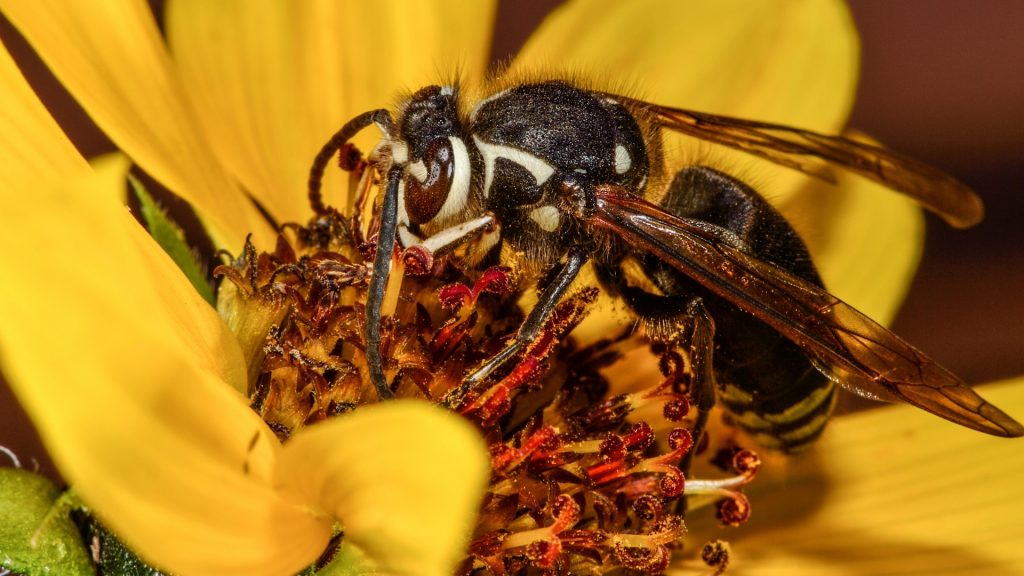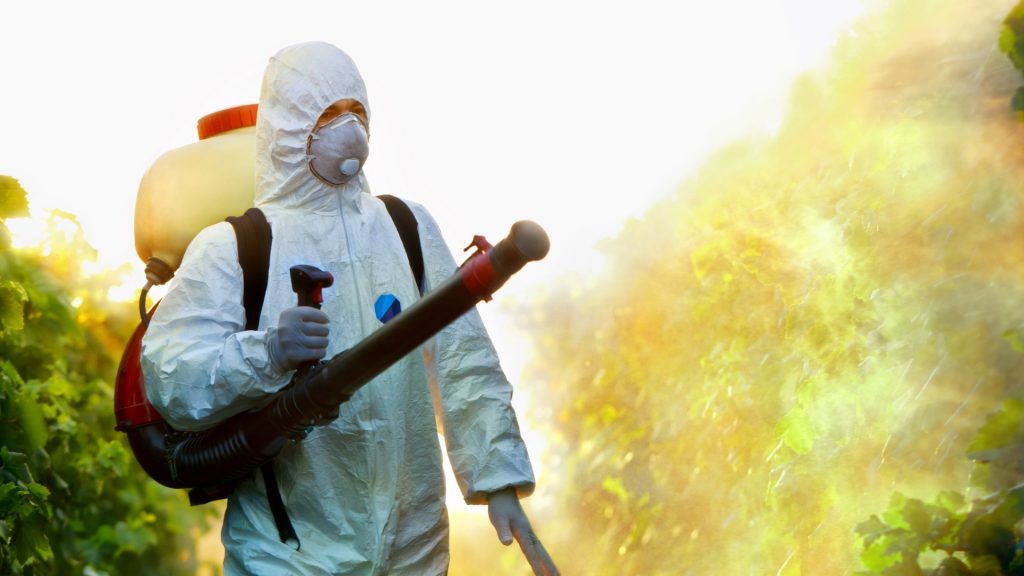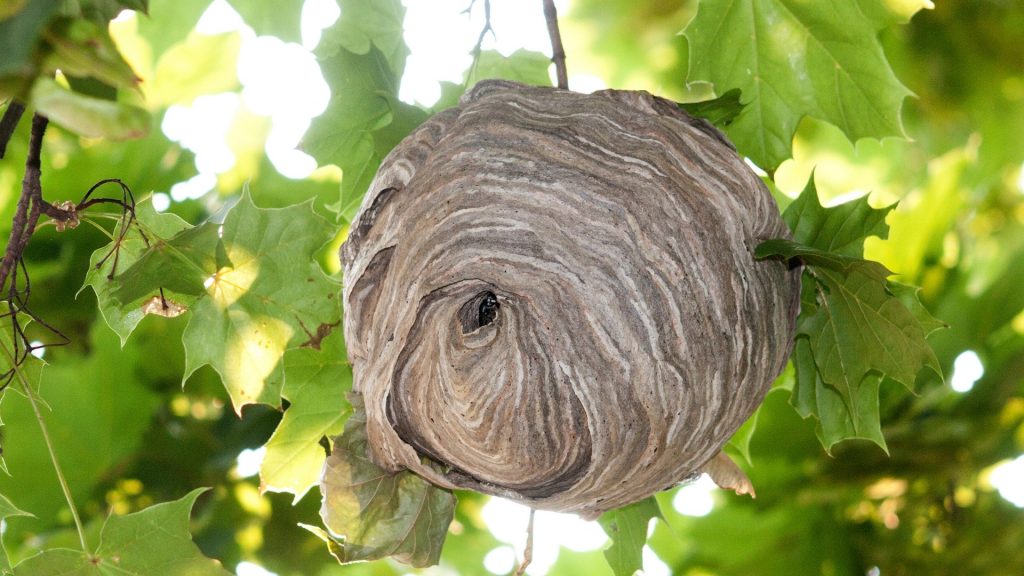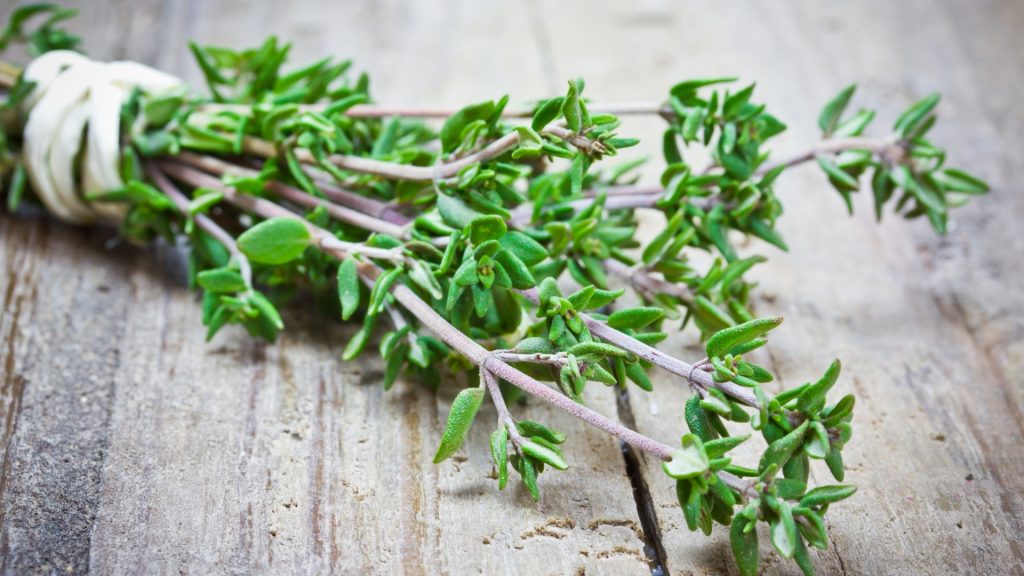Bald-faced hornets are dangerous insects. They’ll sting anyone that comes close to their nest as they’re highly protective of it. Additionally, their stings can cause inflammation and swelling, making them a health hazard.
So, how do you get rid of bald-faced hornets? You can use pesticides and spray it on the nest opening during dusk or dawn when they are less active. Leave the nest alone for a few days and observe from a distance if you can still see them whirring around. Once you don’t see any activities, you can approach the nest and remove it carefully.
To know more about bald-faced hornets, how to properly identify them, how to remove them, and how to prevent them from ever coming back, you may see the additional information below.
Bald-Faced Hornets in a Nutshell

| Name | Scientific Name | Habitat | Diet |
| Bald-faced hornets | Dolichovespula maculata | North America Southeastern of United States (most common) | Aphids Caterpillar Nectar Meats |
Bald-faced hornets are wasps that live in North America, including Canada, the Western Coast of the United States, and the Rocky Mountains. They’re most common in the Southeastern United States. They’re also a type of yellow jacket, not a hornet as most believed.
You can identify these insects with the following features:
- Predominant white face
- Large, black bodies
- White markings on the tip of their abdomen
- Large antennae
The bald-faced hornets are also known for their large, paper ball-shaped nest used to tend their young. Their nest is about 3 feet tall, are typically found hanging above high trees, and are paper-like that is grey in color
In contrast to the open cone structure of yellow jackets and paper wasps, bald-faced nests are enclosed. These insects are highly territorial and typically attack someone who’s a few feet away from their nest.
Related: Yellow Jacket Control: How To Get Rid of Yellow Jackets?
Bald-Faced Hornets Aggressive Behavior Explained
Bald-faced hornets are typically very protective of their nest. This is because it’s where the queen lives and tends their young. The queen also rarely leaves the nest and lays hundreds of eggs, which is why the colony of bald-faced hornets is protective of their den.
Thus, it’s important to remember not to approach their nest when they’re active, as they can swarm at you and sting you with their venom. If you’re planning to spray pesticide on the nest, make sure to do it during the night or dawn when they’re not active.
You may opt to use Eco PCO AR-X to spray the bald-faced hornet’s nest.
- New Size - AR-X 15oz by Zoecon
- Pyrethrin insecticide contains no PBO or CFCs
- Interior and exterior “green” pest control product
- Dual botanical active ingredients provide long residual
This spray is multi-purpose and can use indoors. It has active ingredients obtained from botanical sources that are also ideal repellants for silverfish, spiders, termites, wasps, and more.
What Makes Bald-Faced Hornets Aggressive?
1. Noise
If you make some noise near their nest, it will likely trigger them to be agitated. As a result, the bald-faced hornets might attack and sting you that can cause you to itch, hurt and swell for around 24 hours.
2. Vibrations
Another thing that triggers the aggressive behavior of these insects is vibrations. If their nest happens to be in the side of the shelter, any poundings inside the wall will vibrate to where their nest is, and that will cause them to swarm your house.
3. Quick Movements
The bald-faced hornets also hate quick movements as it disrupts their peace. So, if they see you’re fast-moving, they will swarm and attack you, thinking that you’re trying to threaten them.
Thus, if you happen to be a few feet away from their nest, make sure to step away slowly and carefully. This way, you can ensure that these insects won’t take your action as a threat to their nest.
Things to Do if You Have Bald-Faced Hornets Infestation

Since these insects can get very territorial and aggressive, it’s always best to call a pest control expert to do the job. This expert knows various ways of removing bald-faced hornet nests on your property effectively without harming anyone.
They also know the proper usage of chemicals to exterminate these pests at one go while still following the regulations of the Environmental Protection Agency. This will help in protecting you, your family, and your pets from harmful toxins.
Although these insects can effectively ward off other insects on your property—such as aphids, crickets, grasshoppers, and wasps—their threat outweighs the benefit once they start to nest on your property.
Signs of Bald-Faced Hornet Infestation

One of the signs that you have a bald-faced hornet infestation is seeing a grey, papery, football-shaped nest hanging on your tree. The nest is about 60 centimeters tall and 45 centimeters wide.
You may also see these nests in bushes or building eaves hanging. Furthermore, you may also notice their active activities, particularly during the summer months.
The infestation is there once you spot the nest, which is typically found above the ground. As much as possible, avoid the infested area at all costs to prevent being stung.
Related: How To Get Rid of Hornets Nest? | A Complete Guide
What Happens if You Get Stung by Bald-Faced Hornets?
When a bald-faced hornet stings you, it jabs its toxin under your skin. The sting will itch, hurt and swell for about 24 hours. Nonetheless, if you have an allergic reaction to these insects, the result could be worse.
Promptly seek medical assistance right away if you or anyone shows the following signs after getting stung by these insects:
- Dizziness
- Accelerated pulse
- Breathing difficulty
- Swallowing difficulty
- Face, mouth, or throat swelling
To avoid being stung, avoid coming in contact with these dangerous insects as much as possible. As a homeowner, it’s also best to check up your house for any tiny holes, which can be used as an entry point to your home.
Ensure that all your foods are covered, especially if you’re having picnics or a backyard party. It’s also best not to wear strong fragrances as this can attract bald-faced hornets. It’s also best to wear long pants, jackets, and shoes to protect yourself from rogue hornets’ sudden attack.
Related: Stung by a Large European Hornet? | Information and Control Guide
Natural Ways to Get Rid of Bald-Faced Hornets
Looking for natural ways to get rid of bald-faced hornets, then you’re in the right place! Although there’s nothing you can do if bald-faced hornets choose your vicinity for their nesting place, you can influence their decision.
To get rid of them naturally, consider the following methods:
Use Strong-Smelling Herbs

Place some strong-smelling herbs like thyme and eucalyptus around your backyard. You may also put them near your windows, patios, or places near trees as they typically build their nest hanging there.
Make Bald-Faced Hornet Repellent Spray

You can also make a repellent spray with essential oils by following these easy steps:
- Step 1: Combine the following ingredients in a spray bottle.
- 1 teaspoon clove oil
- 1 teaspoon lemongrass oil
- 1 teaspoon geranium essential oil
- 6 cups of water
- Step 2: Spray it on the bald-faced hornets’ nest, preferably at night when they’re less active.
- Step 3: Repeat this process until these insects decide to leave their nest.
However, if you aim to kill these insects rather than simply driving them away from your vicinity, you may also use three tablespoons of lemon extract diluted in a cup of water.
Drench or spray the solution at night to their nest. Make sure that you’re wearing protective clothing to protect yourself from possible bald-faced hornets attacks.
Related: Powerful Homemade Wasp and Bee Sprays (with Recipes)
How to Prevent Bald-Faced Hornet Infestation?
In the case of prevention, there’s nothing much you can do about it. These insects choose the place they like and build their nest in the area of their likings.
The only thing you can do is to make sure to clean your surroundings well. If these insects still intrude in your vicinity, make sure to call a licensed pest control expert to do the extermination job.
List of Sources
Baker, J. (2021). Baldfaced Hornets in Landscapes.
Iowa State University. (2021). Baldfaced Hornets.
University of Maryland Extension. (2021). Baldfaced Hornet.
- Bed Bug Surge 2025: How to Detect, Prevent, and Safely Eliminate Infestations in Top U.S. Cities - June 18, 2025
- Asian Needle Ants Invade US Homes: 2025 Guide to Identification, Risks, and Effective Control - June 11, 2025
- New World Screwworm Alert: How US Livestock Owners Can Prevent Outbreaks and Protect Herds [Summer 2025 Update] - June 8, 2025

